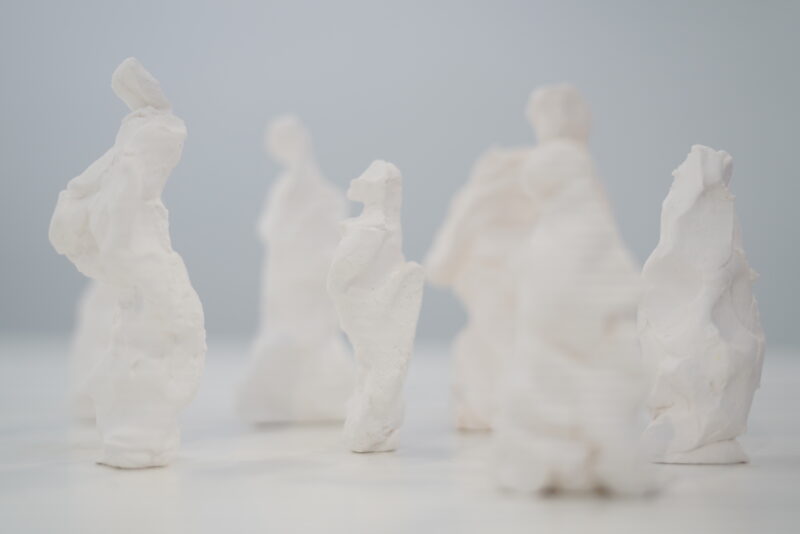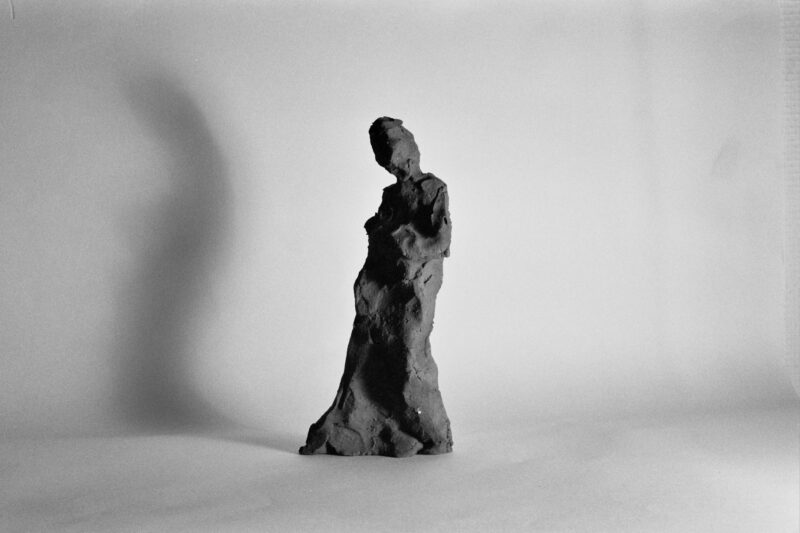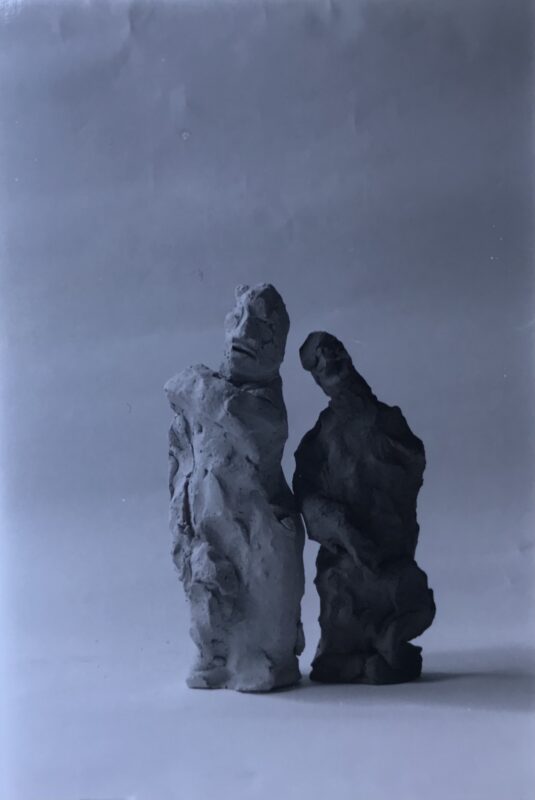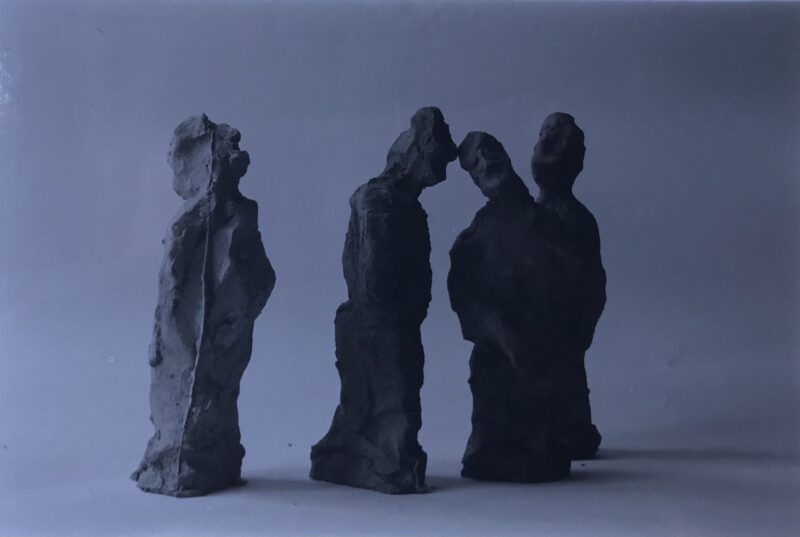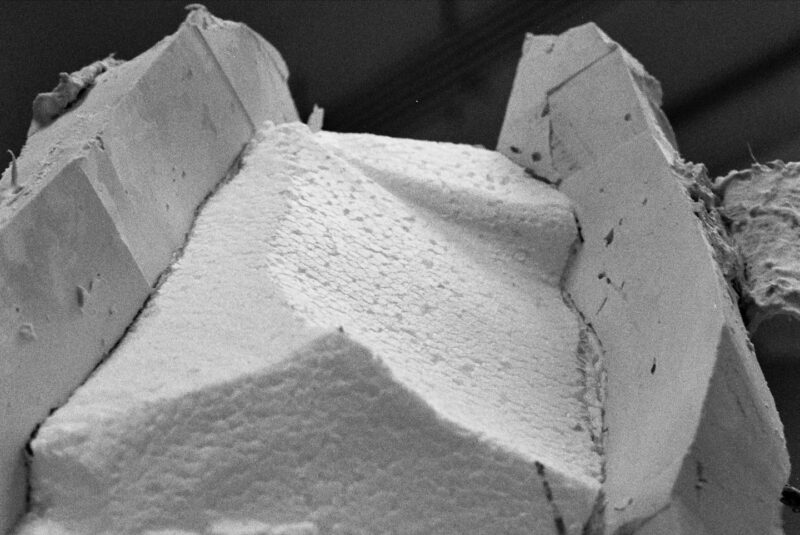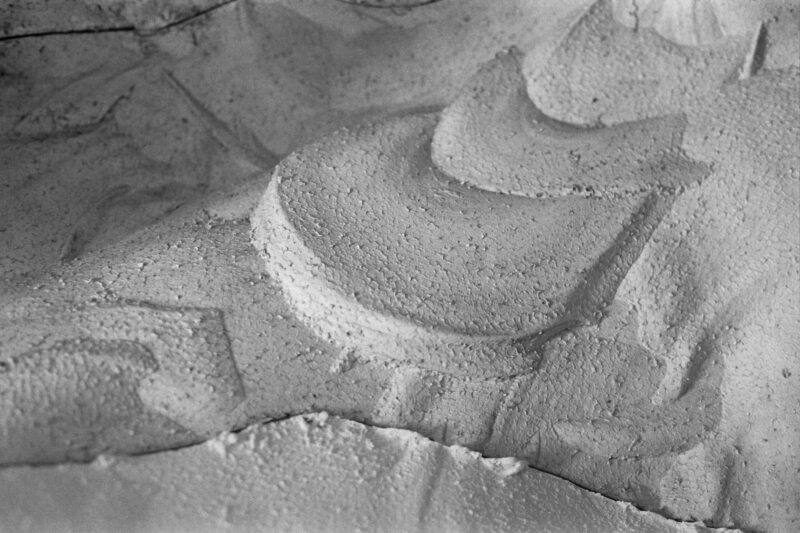Frédérique Nowé, Wuk ej gezeit?
vrije kunsten
peter Rogiers
Jan Florizoone
Het huidig werk van Frédérique evolueert in merkbaar abstraherende zin. In de zoektocht naar de kern van een figuur herleidt ze die bijna tot een schim. Met elk beeld vertrekt Frédéderique steeds vanuit de essentie van het ambacht, ze verwerkt het maakproces tot een essentieel component van haar beelden. Zo zorgt de zichtbare piepschuimstructuur en het accentueren van de naden van de mal voor een zekere kwetsbaarheid van de gedaantes, wat in schril contrast staat met de monumentale grootte van de beelden.
Met toetsten en vegen in de monochrome cementkleur streeft ze naar dynamiek en beweging in haar beelden. Door het spel van vlakken en licht overheerst een van nature innige verbondenheid in de tweestrijd tussen de zware industriële materialen, het kille brutalisme van beton en de organische menselijke vormen.
Door de beelden in groep als één geheel te plaatsen wordt er een intiem moment gecreëerd tussen de statische figuren. Deze opstelling verplicht de toeschouwer tot een vervreemdend voyeurisme, een indringer in de schimmenwereld van Frédérique Nowé.
Frédérique’s current work evolves in a noticeably abstract sense. In her search for the core of a figure, she reduces it almost to a shadow. With each new sculpture, Frédéderique departs from the essence of craftsmanship; she incorporates the creative process as an essential component of her sculptures. The visible polystyrene structure and the accentuation of the seams of the mold, for example, create a certain fragility of the forms, which stands in stark contrast to the monumental size of the sculptures.
With touches and sweeps in the monochromatic cement color, she aims for dynamism and movement in her sculptures. Through the play of planes and light, a naturally intimate connection prevails in the dichotomy between the heavy industrial materials, the cold brutalism of concrete and the organic human forms.
By placing the sculptures a single group, an intimate moment is created between the static figures. This arrangement forces the viewer into an alienating voyeurism, an intruder in the shadow world of Frédérique Nowé.



